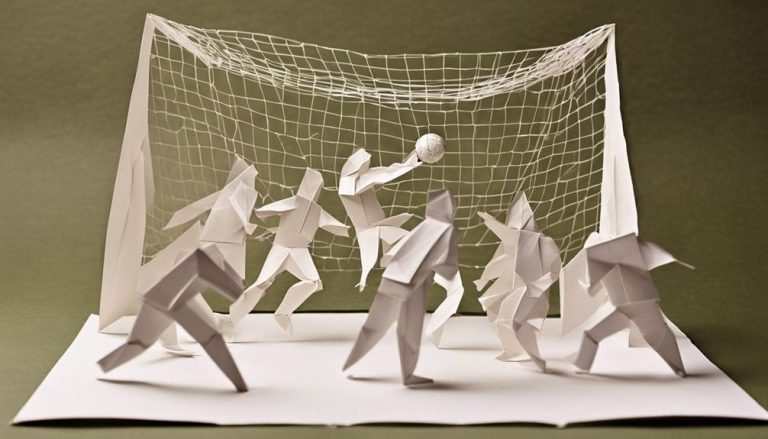General Rules of Squat
You've probably heard that squats are a fundamental exercise, but do you know all the key rules to nail your form and maximize gains? From foot positioning to breathing techniques, mastering the squat involves attention to detail. Whether you're a beginner looking to perfect your technique or a seasoned lifter aiming for new personal bests, understanding these general rules is crucial for getting the most out of your squat sessions. Ready to take your squats to the next level?
Proper Foot Positioning
When squatting, ensure your feet are positioned shoulder-width apart for proper form and stability. This position is crucial to maintain balance control and foot stability throughout the squatting motion. By having your feet at the right distance apart, you create a solid foundation to support the weight you are lifting. Imagine your feet as the roots of a tree grounding you to the earth, providing a stable base for you to push off from.
Proper foot positioning not only enhances your performance but also reduces the risk of injury. It allows you to engage the correct muscles, such as your quadriceps, hamstrings, and glutes, effectively. Remember, the power of a squat starts from the ground up. So, take a moment before each squat to check your foot placement, ensuring they are firmly planted and aligned with your shoulders.
Core Engagement
Now let's talk about core engagement – the key to a strong squat. Remember, proper bracing technique is essential for stability and power. Aligning your core properly ensures you can lift more weight and reduce the risk of injury.
Proper Bracing Technique
Get ready to strengthen your squat form by mastering the art of core engagement through proper bracing technique. When it comes to bracing technique, the key is to create tension in your core muscles to provide stability and support during the squat. Begin by taking a deep breath into your diaphragm, then brace your core by imagining someone is about to punch you in the stomach. This mental focus on bracing will help you maintain a strong and stable position throughout the movement. Remember, proper bracing not only protects your spine but also enhances your overall squat performance. So, engage your core, focus your mind, and feel the power and control that comes with mastering this essential technique.
Importance of Alignment
To optimize your squat performance and protect your spine, ensuring proper alignment through core engagement is crucial. Proper alignment is the cornerstone of a strong squat. When you align your body correctly, you enhance your body mechanics, allowing for greater strength and stability. Visualize your spine staying in a neutral position, engage your core muscles to support your back, and keep your knees in line with your toes. By maintaining proper alignment, you reduce the risk of injury and maximize the effectiveness of each squat. Remember, your body is a powerful machine, and when all parts are aligned and engaged, you can unlock your full potential. Trust in your body, align it correctly, and conquer your squats with confidence.
Hip and Knee Alignment
Are your hips and knees properly aligned during your squat? Ensuring the correct alignment of your hips and knees is crucial for maintaining proper form and preventing injuries. Here are some essential tips to help you achieve optimal hip and knee alignment during your squats:
- Hip Position: Keep your hips in line with your knees throughout the squat movement to maintain stability and prevent excessive strain on your lower back.
- Knee Tracking: Ensure that your knees track in line with your toes as you lower into the squat position. Avoid letting your knees collapse inwards, as this can lead to unnecessary stress on the knee joints.
- Foot Placement: Position your feet shoulder-width apart and slightly turned outwards to help promote proper alignment of your hips and knees. This stance will provide a stable base of support for your squatting movement.
Depth of the Squat
Maintaining proper depth in your squat is essential for maximizing strength gains and ensuring full muscle activation. When it comes to squat depth, focus on maintaining good form to prevent injury and engage your muscles effectively. Your squat should ideally bring your hips slightly below your knees while keeping your chest up and back straight. Achieving the correct depth not only targets your muscles better but also improves your mobility and flexibility over time.
To enhance your squat depth, work on your mobility and flexibility. Incorporate exercises like hip flexor stretches, hamstring stretches, and ankle mobility drills into your routine. These movements will help you achieve a deeper squat position with ease, allowing you to reap the full benefits of this powerful exercise.
Breathing Technique
When squatting, remember to focus on your breathing technique to optimize your performance. Proper breathing patterns and the importance of exhaling are key points to keep in mind. Mastering your breath will help you maintain control and power throughout each squat.
Proper Breathing Patterns
To optimize your squat performance and protect your core, focus on synchronizing your breathing with your movements. Utilizing diaphragmatic breathing and mastering breath control are crucial elements in enhancing your squatting technique. Here are three key points to remember when it comes to proper breathing patterns:
- Inhale deeply through your nose before descending into the squat position.
- Hold your breath at the top of the movement to stabilize your core and maintain intra-abdominal pressure.
- Exhale forcefully as you push back up to the starting position, engaging your core muscles for added power.
Importance of Exhaling
Exhaling during your squat is a crucial element that enhances your performance and ensures proper muscle engagement. When you exhale during the exertion phase of the squat, you engage your core muscles more effectively, providing stability and power throughout the movement. Proper breathing also helps you relax and maintain focus, key components for a successful squat routine. Check out the table below for a quick overview of the benefits and relaxation techniques associated with exhaling during your squat:
| Benefits | Relaxation Techniques |
|---|---|
| Improved core engagement | Focus on your breath |
| Enhanced stability | Release tension in muscles |
| Increased power | Visualize success |
Barbell Placement
For optimal form and stability during your squat, consider the positioning of the barbell on your back. Proper barbell placement is crucial for a successful squat session. Here are some key points to keep in mind:
- Shoulder stability: Ensure the barbell rests comfortably on your upper back, not directly on your neck. This position helps maintain shoulder stability throughout the movement, reducing the risk of injury and allowing for better weight distribution.
- Grip strength: Your grip on the barbell plays a significant role in maintaining control and balance during the squat. Focus on gripping the bar firmly but not excessively tight. This will help you stabilize the weight and prevent it from rolling on your back mid-squat.
- Barbell position: Experiment with high bar and low bar positions to find what works best for you. High bar squats emphasize quad engagement, while low bar squats engage the hips more. Choose the position that aligns with your squatting goals and feels most comfortable for your body.
Frequently Asked Questions
Is It Better to Squat With a Wide Stance or a Narrow Stance?
When squatting, think of your stance like a dancer's grace – wide or narrow, it's your choice. A wide stance activates more muscles, while a narrow one enhances balance control through foot positioning. Experiment and find what feels empowering for you.
How Can I Prevent My Heels From Lifting off the Ground During a Squat?
To prevent your heels from lifting during squats, focus on foot placement and ankle mobility. Ensure weight distribution is even, engage your core for stability. Keep those heels down and stand strong through the movement.
Should I Be Using a Belt While Squatting?
When squatting, consider using a belt for added support. It can help maintain proper form and prevent injury. However, be mindful of relying too heavily on it, as it may hinder your core strength development.
Can I Still Squat if I Have Knee or Hip Issues?
If knee or hip issues arise, modified squats can help. Seek alternatives like box squats or leg presses. Consult a professional for guidance. Don't let obstacles deter you; adapt and conquer your fitness journey.
How Often Should I Incorporate Squats Into My Workout Routine?
You should aim to do squats at least 2-3 times a week for optimal benefits. Try mixing up your routine with different squat variations to keep challenging yourself and track your progress for continuous improvement.






